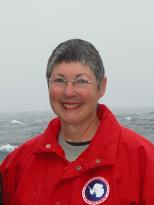OOI Mapping Cruise 2008
The Oceans: Medicine Chest for the World
For thousands of years, humans have depended upon terrestrial life forms to produce remedies that treat various ailments. Nature is the most important source of pharmaceutical compounds.
Currently, though, much of the terrestrial biodiversity has been exploited and the production of new medicinal compounds is diminishing. The synthesis of new antibiotics, for example, has dramatically decreased while antibiotic-resistant microbes have increased. New communicable diseases (SARS, bird flu, mad cow disease in humans) are appearing along with the reemergence of historic infectious diseases such as tuberculosis. Similarly, new anti-neoplastic (anti-cancer) agents are not being discovered as quickly as they once were, while the incidence of cancer continues to be a problem.
We have systematically tapped terrestrial habitats. Therefore, probing the much-ignored ocean, the largest ecosystem on earth, is essential for the development of new medicinal compounds. This last expansive, unexplored aquatic frontier covers 70% of our planet. The ocean is a treasure chest of unique prokaryotes (bacteria), archea and eukaryotes (plants, animals, fungi, algae).
Novel marine biodiversity is concentrated in four areas: (1) coral reefs, (2) seamounts, (3) hydrothermal vents, and (4) abyssal slopes and plains. Compounds with uncommon and exciting biological activity have been discovered in the marine environment. For example, many sessile invertebrates live in densely populated habitats where competition for resources (e.g., space, food) is intense. Many produce chemicals known as secondary metabolites. These unique compounds have evolved for use in defense, reproduction, and/or communication. If for example, a sponge is trying to prevent another sponge from invading its space, it produces a chemical to prevent the other sponges’ cells from growing and dividing. Sea squirts are unusual in that their stem cells make an entire new body every week (disposable bodies!) whereas human stem cells only repair and regenerate. The ocean is full of such unusual creatures. In terms of treating human disease, a secondary metabolite may interact with receptors and/or enzymes to effectively inhibit the uncontrolled growth of cancer cells. The sea squirt may contribute to the regeneration of human organs from stem cells.
So far, a limited number of compounds have been produced from marine sources; Cytosar-U was the first marine-derived anticancer drug. This compound, isolated decades ago, from the Caribbean Sea sponge has been an essential element in the treatment of leukemia. Currently, though, few marine-derived medicinal compounds are in use.
The ability to procure the marine life forms is fundamental to turning a natural compound or a synthetic counterpart into a safe and effective pharmaceutical product. Conventional means of collection involve the use of a Scuba diver, ship, ROV, AUV, and/or manned submersible. One of the many contributions of the Ocean Observatories Initiative will be to revolutionize recovery of unique life forms from the ocean.
Once the specimen is procured, investigation commences. The first step may involve making an extract of the organism (“life-form daiquiri”!) for crude screening. Next analysis may involve any or all of the following: identification, purification, DNA analysis, determination of molecular structure, and synthesis. The marine-derived extract and/or pure compound is then subjected to conventional assays to evaluate end points such as toxicity against human cancer cells, activation or inhibition of enzymes involved in disease processes, inhibition of growth of microbes, and activation or inhibition of receptors associated with pathological processes. If assay results are promising, the new chemical entity (NCE) may be tested for efficacy and toxic effects using an animal model. More recently, this evaluation may be done in silico using computer simulations.
If the NCE possesses potential, the research laboratory then looks for a pharmaceutical company interested in licensing the compound for clinical development. This costly process involves making an investigational new drug (IND) application to the Federal Food and Drug Administration (FDA) followed by human clinical trials. The trials are conducted in three phases and may be terminated at any point in time if a problem arises. The Phase I Clinical Trial addresses safety and toxicity (Is the compound safe?) while Phase II examines efficacy (Does it work?). Phase III then compares the new treatment to the standard treatment (Is the new compound better than the standard treatment?). If the potential medication performs well in clinical trials, the pharmaceutical company may file a new drug application with the FDA. Upon FDA approval the medication may be brought to market. This is a long and costly process.
The Ocean Observatories Initiative is a bold new project to bring the ocean to all the people in the world. Since the ocean is constantly changing, in situ sensors will be transmitting these data to land in real-time. Life forms, affected by changes in the ocean can be identified and studied in a way never before possible. The Ocean Observatories Initiative will make a wide range of vital marine derived pharmaceuticals a reality and improve the health of all people on the planet. Investment in marine biotechnology must be dramatically increased.
As a nurse, I have administered thousands medications over 40 years and only one drug was marine derived! In the interim, the multidisciplinary nature of the Ocean Observatories Initiative has the potential to foster interaction between the health sciences community and ocean sciences community. In summary, the oceans, have the potential to be the medicine chest for the world in coming decades and will positively effect the health of every human being on the planet.
Related Content
Voices
- Newbies, Oldies and 21st Century Oceanography
- Going to Sea
- Once and Future Oceanographer
- The Oceans: Medicine Chest for the World
- When Your Home Bobs
- Seas of Opportunity
- Voices of the Fishes
- Oceanography as an Opportunity to Contribute
- The Water Column
- Ocean Heritage Guides this Oceanography Major
- Theater in the Round


